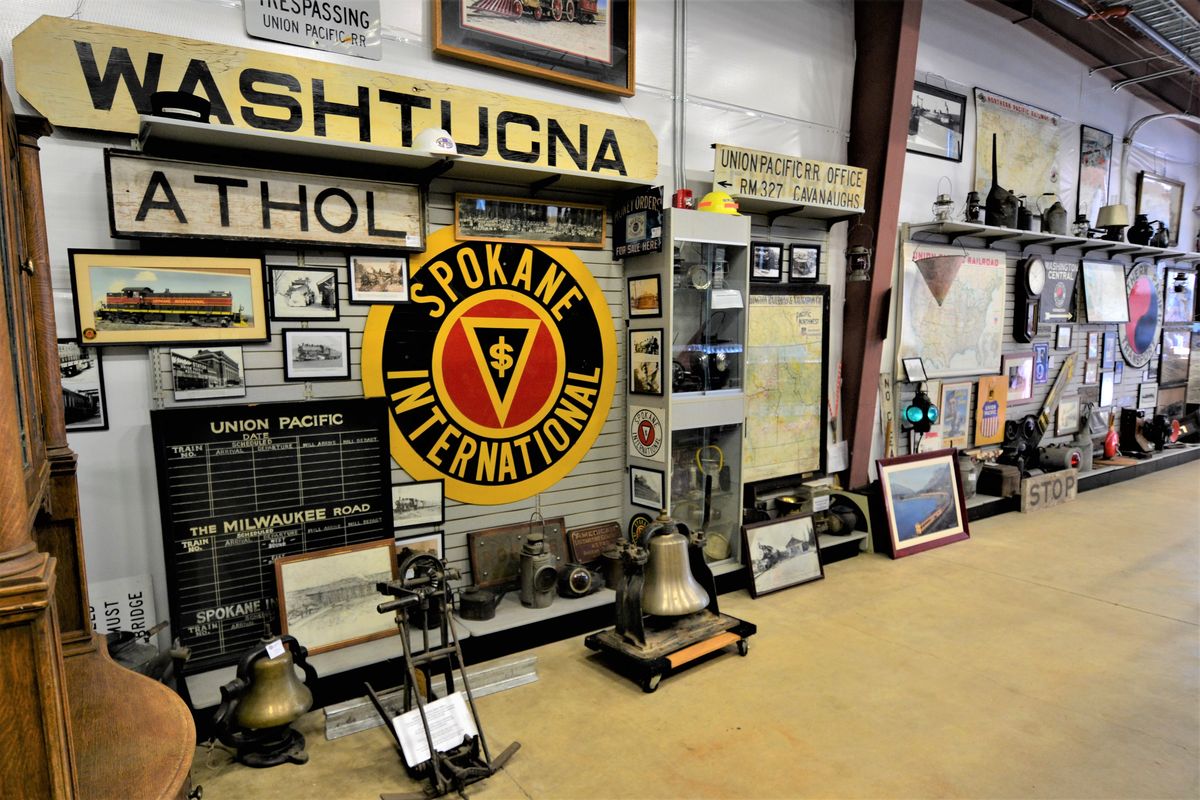Track down rail history at Reardan museum

The loud chug, chug of the massive iron engine as its ear-splitting horn announces arrival into town. The hissing of steam and repeated clang, clang of the bell as it passes the train depot on huge wheels. The ground trembles from the weight. Memories of a bygone era are displayed at the Inland Northwest Rail Museum in the Lincoln County town of Reardan.
This weekend, families can come celebrate the anniversary of the completion of the first transcontinental railroad at the museum. Friday through Sunday, there will be “speeder” rides, and visitors can drive their own golden spike to commemorate the meeting of the Union Pacific and Central Pacific at Promontory, Utah, in 1869.
This memory of steam engines and rail cars is similar now to waiting at a rail crossing with four or five diesel locomotives approaching with the loud blast of the horn and the tremendous feel of the power and weight of the engines as they pass, pulling more than 100 cars. In 50 years, that will also be a fond memory that will survive.
Rail history is rich, alive and well in the Pacific Northwest. The section of Spokane called Hillyard is named after the man who imagined and developed a transcontinental railroad. James J. Hill owned the Great Northern Railway and chose, just outside Spokane’s city limits, to build a terminal in 1892. By the 1920s, the town had developed into a well-known company building steam locomotives and repairing them at Hill’s Yard.
Steven’s Pass in the Cascade Mountains got its name from Hill’s locating engineer John Stevens, who explored and determined which route would be the best way over this formative range of mountains.
Hill’s son, Louis J., who became president of the Great Northern, was partly instrumental in encouraging the establishment of Glacier National Park. Great Northern for years provided the only transportation to the park. The company developed the rustic and beautiful lodges that are still in demand today.
The Inland Northwest Rail Museum features rail history large and small, from locomotives and rolling stock cars to small pins and hats the conductors wore. Historic stories are paired with old engines, maps, signs, passenger cars, dining cars, baggage cars, caboose and freight cars.
Several of the cars have been restored. Visitors can enter the cars outside in the yard and learn the history of each one. Inside one car, the sound of a steam locomotive can be heard chugging past while blowing its horn. One of the cars in the museum is a beautiful electric trolley, once a common sight riding on rails through downtown Spokane.
The museum’s main building is new. It is obvious that volunteer members had an enormous challenge moving from the Spokane Fairgrounds to Reardan. The story of the move is in the new center. Inside, there are two tracks allowing cars to be pushed in and rebuilt.
The streetcar supplies a perfect example for what this museum is about. First, it stands for the time, craftmanship and passion that is needed to bring a historical item back to life. It also supplies an almost lost time when trolleys were essential in Spokane. If you lived in the city around 1888 at least a mile from downtown, there were two ways to get to work – either walk or ride a horse.
Several companies laid down iron tracks that horse-drawn carriages could pull for commuting. Later, steam-powered engines were used. Eventually, electrified trolleys with over-the-street wires were owned and operated by the Washington Water Power Co.
Electric trolleys used cheap hydroelectric power that was being produced right downtown on the Spokane River. Also, a cable car was used on the South Hill. Today, sections of cobblestone and brick streets with rails can still be found. Cars took over, and trolley service was dropped in 1936.
Outside the museum, visitors can ride the Reardan Rocket, a 2-foot gauge train on a half-mile track. The engineer will say that they go around twice so you don’t miss anything. Back inside the building, there is more train paraphernalia upstairs: a model train layout, more signs and a view overlooking two cars being restored. There is a small store selling train stuff like books for all ages, toys and clothing. Plan to stay at least two hours.
On the way home, you might imagine hearing the chug, chug of a steam locomotive and a conductor yelling, “All aboard!”